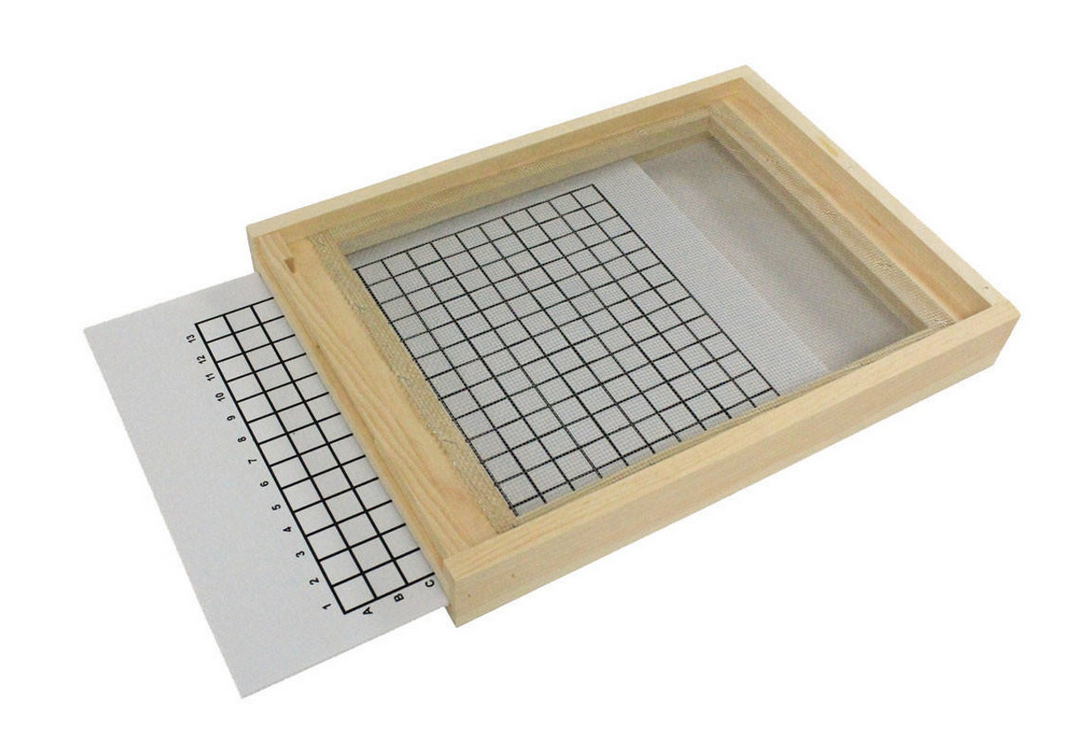Sticky boards, also sometimes referred to as IPM boards, are one of the simplest and most effective tools for monitoring varroa mite levels in your hive. They’re inexpensive, non-invasive, and can give you valuable insight into whether or not it’s time to treat.
What Is a Sticky Board?
A sticky board is usually a piece of corrugated plastic or cardboard that’s coated with a sticky substance (like petroleum jelly or a non-animal based oil). It’s placed beneath the screened bottom board of your hive to catch mites as they fall off bees naturally.
If your hive doesn’t have a screened bottom board, there are insertable trays you can use for the same purpose.
Why Use a Sticky Board?
Monitoring mite drop over a 24- to 72-hour period helps you:
- Estimate the current mite load without disturbing the bees
- Track mite population trends over time
- Determine the effectiveness of your mite treatments
- Make informed decisions about whether and when to treat
That said, while sticky boards are excellent for non-invasive monitoring, they do not replace more precise sampling methods like an alcohol wash or dish soap wash. Those tests are still the gold standard for measuring infestation levels per 100 bees.
How to Set Up and Read a Sticky Board
- Apply adhesive: Coat the board with a thin layer of non-animal based cooking oil or petroleum jelly. This keeps the mites from crawling away once they fall.
- Insert the board: Slide the sticky board into the slot or rail beneath your screened bottom board until it’s fully seated. Most setups hold the board in place with no room for movement.
- Leave it for 24–72 hours: Most beekeepers do a 72-hour drop for more accurate results. Avoid rainy or windy days if you’re in an open location.
- Remove and count: Carefully pull out the board and count the number of mites. Use a magnifying glass if needed.
- Calculate average drop per day: Divide your total by the number of days it was in the hive.
- Compare to thresholds: Thresholds vary by season and region, but many use a daily drop of 9–12 mites in summer as a treatment indicator.
Pro tip: Create a laminated grid over your sticky board or use printable grid sheets to help with counting.
Limitations to Keep in Mind
Sticky boards are great for monitoring, but they won’t give you a total mite count. They’re best used regularly to detect trends and confirm treatment effectiveness—not as a one-time diagnostic.
Final Thoughts
Sticky boards are an essential tool for varroa management. They’re easy to use, don’t require opening the hive, and provide actionable data. Use them consistently throughout the season to stay ahead of mite problems before they spiral out of control—and pair them with more accurate sampling when it’s time to make treatment decisions.
